ESA DG in European Space Directory 2012
Jean-Jacques Dordain, ESA Director General, looks back at ESA's achievements in 2011 and discusses what is yet to come in 2012 in the foreword of the 27th Edition of the European Space Directory.
Text prepared at the end of February 2012 for the Edition that has just been released.
European Space Directory 2012, 27th Edition
Foreword by Jean-Jacques Dordain, ESA Director General
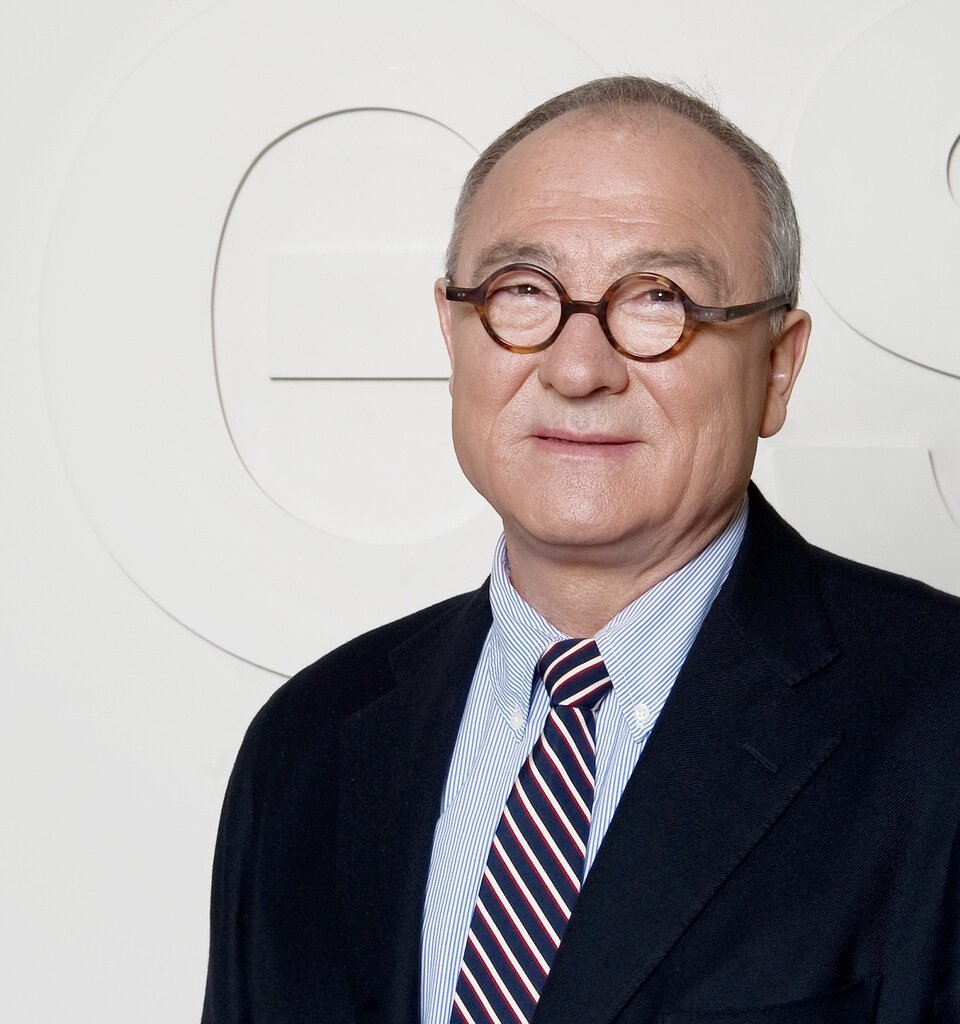
The European Space Agency does not operate on a different planet from other space players in Europe and the world. ESA must anticipate global change in order to be able to meet, at all times, the expectations of the stakeholders it serves. As a result, the ESA of 2011 is different from the ESA of just a few years ago. And 2012, too, is seeing a different ESA emerge: fitter, better connected and more efficient. If 2011 was yet another successful year for ESA, 2012 is a year in which the Agency faces a number of great challenges.
A multifaceted success story
ESA Member States are the driving force behind our organisation. Together with national programmes and national agencies, ESA runs unique space programmes which enhance Europe’s position on the world stage. Our strong cooperation with the European Union through the European Commission has allowed us to enlarge our sphere of action with major programmes such as the Galileo satellite navigation system and the GMES (Global Monitoring for Environment and Security) programme. Public Private Partnerships with industry are becoming increasingly common in the setting up of our programmes, as are stronger ties with operators capable of providing services to users from launch right through to the entire life of a satellite.
Space is a sector combining both knowledge and technology, but is also a key element in competitiveness and one of the few sectors in which the transfer between knowledge and services is systematic and rapid. Space is also an industrial sector, and one of the few economic sectors in which all industrial activities take place within Europe.
Thanks to the outstanding contributions of all the players on the European space scene (our Member States, the EU, industry, and operators) space is one of the few sectors where Europe is both a world leader and a model for others. It is a leader in the commercial market, in technology and in the provision of services. It is a model for the way it uses space to benefit the citizens of Europe and the world, and also through being a reliable partner in international cooperation.
Ongoing evolution
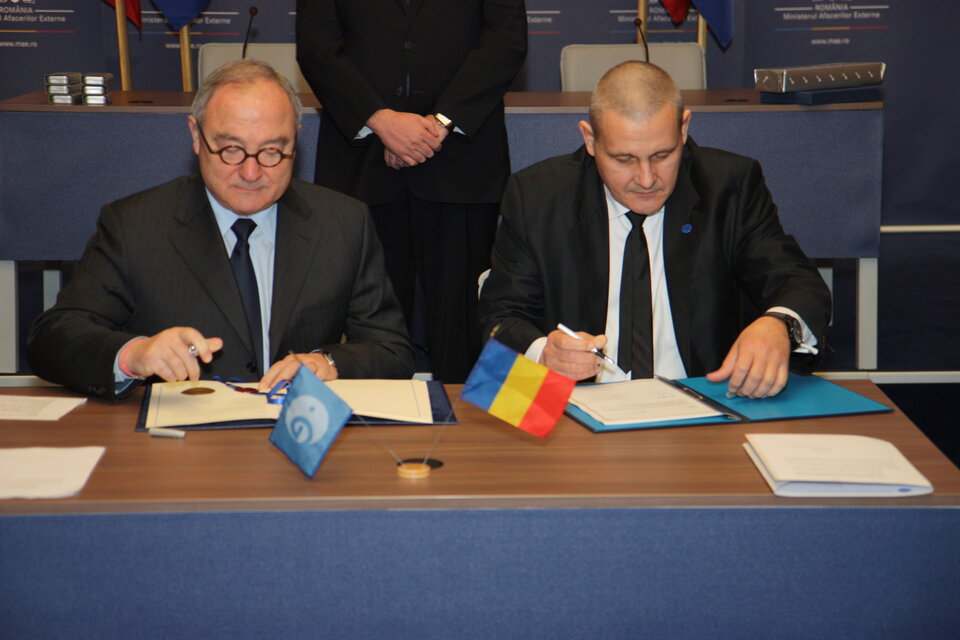
Since 2003, the Agency's membership has grown from 15 to 19 Member States and ESA has welcomed six more countries as European Cooperating States (Hungary, Czech Republic, Romania, Poland, Estonia, Slovenia), reflecting the political role of the European Union as an increasingly important actor in space. In early 2011, Romania signed the Accession Agreement to the ESA Convention, becoming the 19th Member State towards the end of the year. Poland is expected to become the 20th fully-fledged ESA Member State during the course of 2012.
By October 2011, the Agency had invited 10 more European countries to participate in meetings of its governing body, Council, for matters of common interest to ESA and the EU. Thus, delegations from 10 EU Member States which are not yet ESA members (Bulgaria, Cyprus, Estonia, Hungary, Latvia, Lithuania, Malta, Poland, the Slovak Republic, Slovenia) for the first time had the opportunity to sit as observers on Council, the forum in which the future of European space programmes is debated and defined. A draft cooperation agreement with the Government of Malta was also adopted.
Turning to other changes, in June 2011 we signed an Administrative Arrangement to govern our cooperation with the European Defence Agency. ESA and EDA have already been cooperating in a variety of areas, including intelligence, surveillance & reconnaissance, satellite communication in support of Unmanned Aerial Systems (UAS) and space situational awareness, as well as critical space technologies. The first practical application of that June agreement came on 15 December, when ESA and EDA signed the first contract in a pilot project for UAS navigation. Both parties are interested in demonstrating that space-based assets such as telecommunications and navigation satellites can provide UAS-relevant services, for instance for environmental and maritime surveillance applications.
2011 missions and programmatic milestones
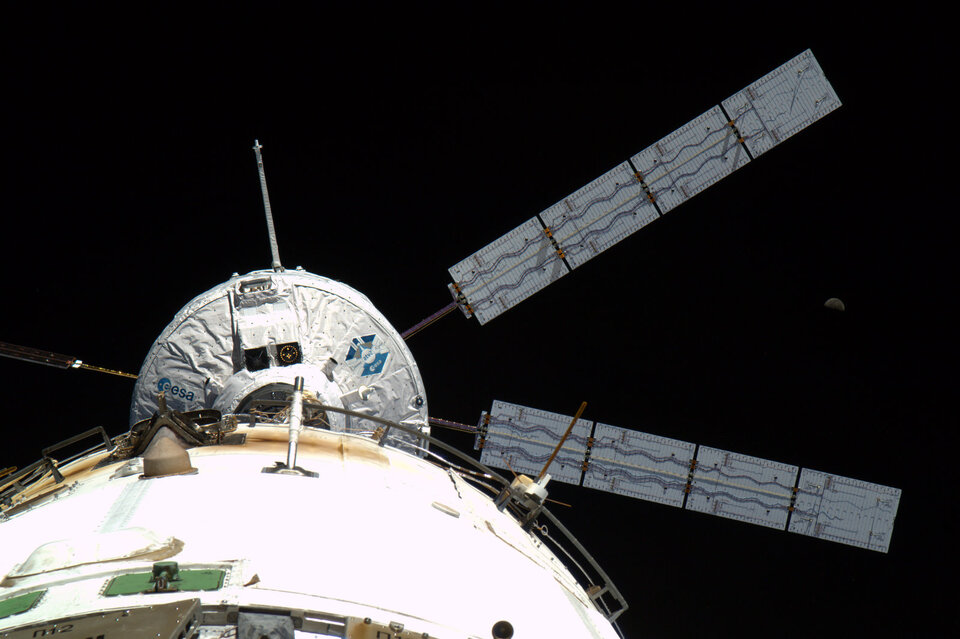
In 2011 we witnessed missions aplenty, many conducted on the basis of international cooperation. As a matter of fact, we have fewer and fewer missions that do not involve international partner agencies such as NASA, Roscosmos, and JAXA, to name just the most traditional ones.
Concerning space science, the backbone of Europe's space activities, scientists from ESA and several European astronomy institutes presented the first data and results from ESA’s Planck mission at the beginning of the year. Thousands of sources detected by the Planck spacecraft, ranging from radio to far-infrared wavelengths, were collected and catalogued. Since its launch, coupled with that of Herschel in May 2009, Planck has been taking the most accurate measurements ever of the cosmic microwave background radiation left over after the Big Bang. These investigations will help us learn more about the birth, evolution and ultimate fate of the universe.
The area of human spaceflight and operations was particularly eventful. The year started with ESA’s second Automated Transfer Vehicle Johannes Kepler being launched to the International Space Station on an Ariane 5, docking a few days later to the Russian port on the orbital outpost. During its mission lasting almost four months, ATV 2 delivered critical supplies and performed an ISS reboost. Like its precursor in 2008, this second ATV was constantly monitored by the dedicated ESA/CNES ATV Control Centre in Toulouse, in coordination with the ISS control centres in Moscow and Houston. ATV 3 will follow in March of this year (see "Outlook for events in 2012").
2011 was also a remarkable year for European astronauts in space: in May, the US Space Shuttle lifted off on its penultimate mission to the ISS. ESA astronaut Roberto Vittori and his five crewmates spent 16 days in space on a mission to deliver a highly sophisticated European instrument – the Alpha Magnetic Spectrometer (AMS) - designed to identify the cosmic fingerprint left by antimatter and dark matter in the universe. Paolo Nespoli, having been dispatched to the ISS back in December 2010 on a Russian Soyuz rocket from Baikonur, spent almost half a year in orbit, returning to Earth in May. Then, on 21 December, André Kuipers flew to the ISS onboard a Russian Soyuz launched from Baikonur. During the six-month PromISSe mission, he will perform about 30 ESA experiments and over 20 experiments for the other international partners. He is expected to return to Earth this year on 1st July.
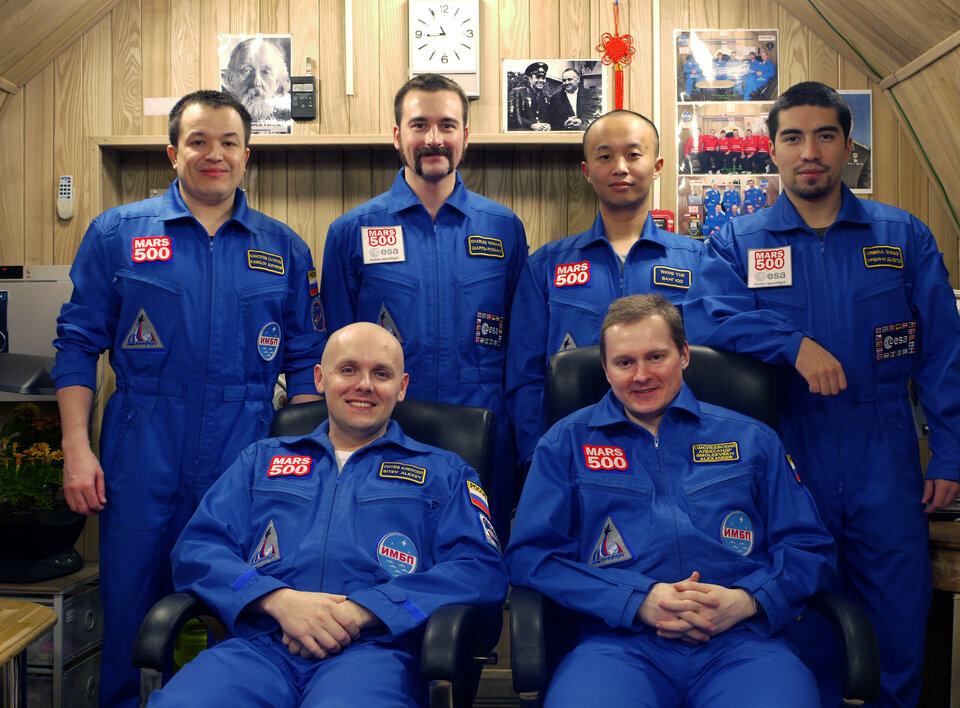
Future long-duration human spaceflight missions to Mars will require experienced international crews, so we have to begin preparing as of now. From June 2010, six crew members on a simulated mission to the Red Planet were isolated in a special facility near Moscow. Mars500 is the first full-duration simulation of a human-rated mission to that destination, deploying a space infrastructure mock-up faithfully replicating almost all aspects of real spaceflight – except for the weightlessness, radiation and reality of interplanetary space travel. The Mars500 crew members – three Russian, two European and one Chinese – "returned" to Earth on 4 November when the mock-up’s door was unsealed and they were released to rejoin friends and family.
Space exploration and its direct benefits to humankind were also very much on the agenda of the international space community in 2011. On 10 November, representatives of 28 countries, the European Commission and ESA met in Lucca, Italy for the Third International Conference on Exploration and the first High-level International Space Exploration Platform. The next Conference in 2013 will be hosted by the US.
A major event for ESA, the European Commission and Russia, and also a double-first, took place on 21 October: the first pair of satellites for Europe's Galileo global navigation satellite system was lofted into orbit by the first Russian Soyuz rocket to be launched from Europe's Spaceport in French Guiana. The satellites reached their final orbit under the control of a joint ESA/CNES team centred in Toulouse. After these initial operations, satellite control was handed over to SpaceOpal, a company jointly set up by the German Aerospace Center (DLR) and Italy's Telespazio, to undergo 90 days of testing before being commissioned for the In-Orbit Validation phase. The very first Galileo signal was acquired on 10 December from the Redu ground station in Belgium.
In the field of telecommunications, in June 2011, AlphaBus, the world’s largest communication satellite platform, developed in cooperation with the French space agency CNES, was ready to offer new opportunities to satellite operators worldwide. The platform was formally accepted for its first satellite, AlphaSat I-XL, marking an important milestone in its journey into space planned to start at the beginning of 2013.
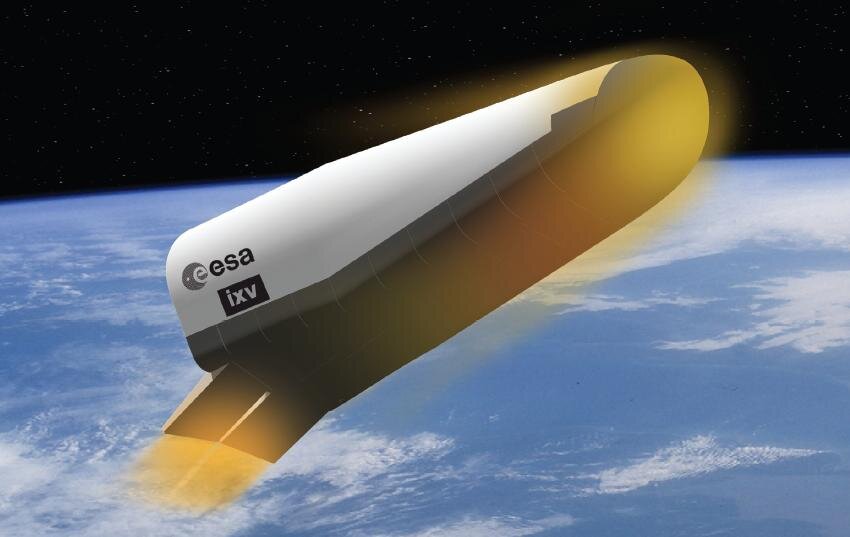
Many programmatic decisions were taken in 2011: for the ISS, the participating Member States decided to fund its utilisation through to 2015, while at the same time deciding in principle to support the extension of ISS Exploitation through to 2020. Support for the exploitation of Ariane 5 and the European Data Relay Satellite (EDRS) system was also granted by the participating States. In the light of the current economic environment, this injection of almost !1 billion demonstrated that the Member States do indeed take space very seriously.
In December, ESA and Arianespace signed the first commercial launch contracts for Vega, which successfully performed its qualification flight in February 2012. At the beginning of 2013, Vega will launch ESA's Earth observation satellite Proba V (Vegetation) and, at the end of 2013, the atmospheric reentry demonstrator, IXV. The Intermediate eXperimental Vehicle is now under construction at Thales Alenia Space Italia. In 2014, Lisa Pathfinder will be launched by Vega. Europe's small launcher will also be used to loft Sentinels-2B and -3B, satellites dedicated to the European programme GMES (Global Monitoring for Environment and Security). These launches are scheduled for 2015.
The undeniable successes of 2011 took place during what was clearly a difficult year due to the economic situation affecting not only our Member States but also our international partners. We do not live in different universes. We work in space but we live on the same planet as everybody else, with its ongoing economic and political difficulties. It is never what has been done that is important, but rather what needs to be done in the future. So let's take a look at what is lined up over the year that has just begun.
Outlook for events in 2012
2012 is a year of multiple challenges. The number of missions that ESA is having to deal with is on the rise. To the point that, for the first time in the Agency's history, we are now having to carefully evaluate the launch manifest of ESA missions. We are experiencing increasing scheduling interference between successive missions, not only for the launches themselves but also for the role our control centres, ESOC in particular, are required to play.
Mission challenges
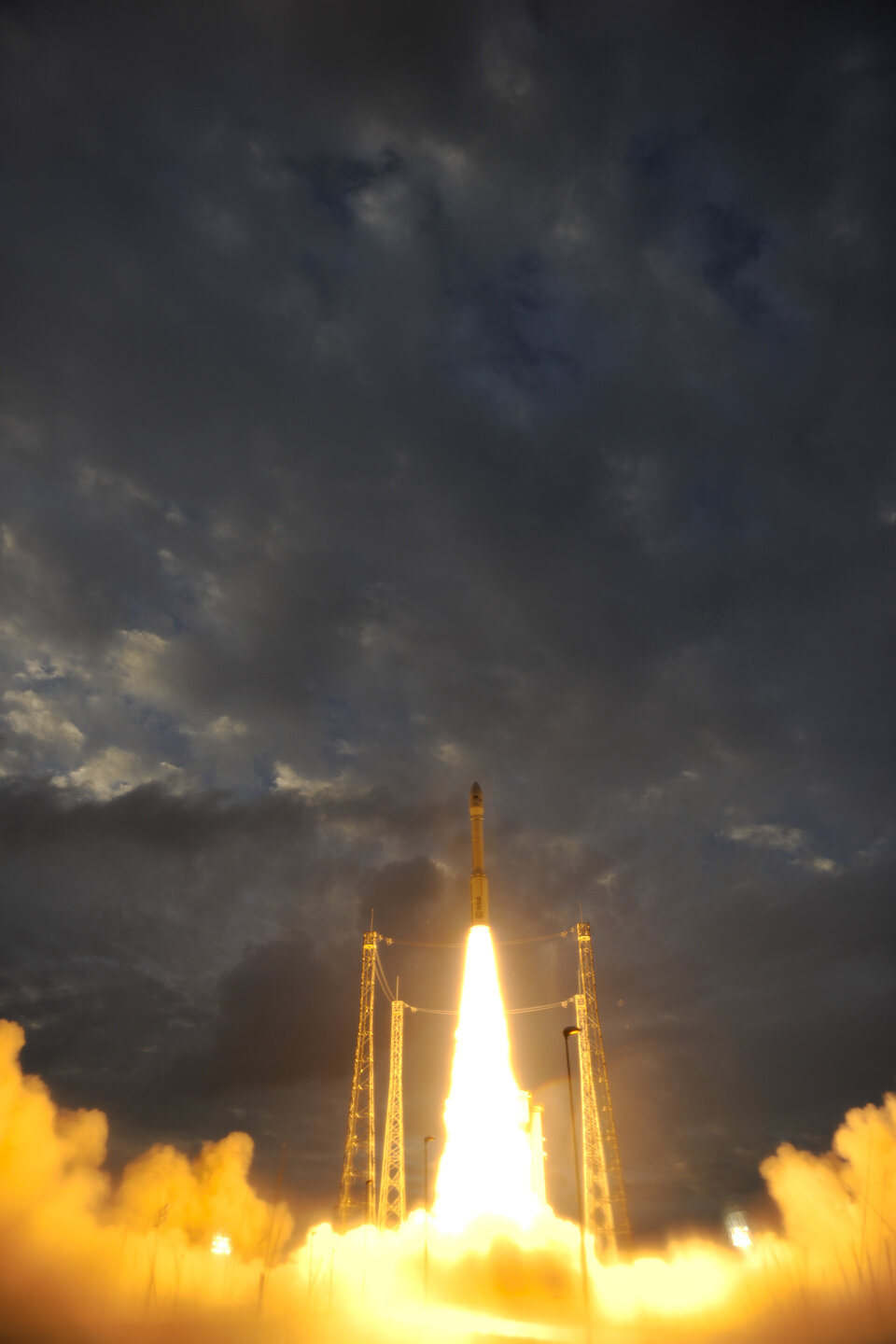
Firstly, the mission challenges this year began with the inaugural launch of Vega on 13 February from Europe’s spaceport in French Guiana. The stages for the qualification launcher arrived in Kourou on 24 October 2011. The launch campaign started on 7 November with the transfer of the first stage to the launch pad.
On its maiden flight, Vega accommodated an impressive selection of payloads inside its fairing: the LARES laser relativity satellite from the Italian space agency (ASI); AlmaSat-1 for technology demonstration in the field of innovative propulsion systems; and seven microsatellites, collectively named CubeSats, from European universities. Together, they represent a diverse range of designs and a variety of miniaturised technologies and sensors. Each 1-kg CubeSat was deployed in a high-inclination, low-Earth orbit, where it is expected to operate for up to four years, using a small ground station based at its respective university.
The third Automated Transfer Vehicle is scheduled for launch on March 23 on an Ariane 5 from French Guiana. Named after the famous Italian physicist Edoardo Amaldi, ATV 3 will carry about two tonnes of dry cargo, 285 kg of water and over three tonnes of propellants to the ISS. Undocking and re-entry is planned for September. In work involving some 2,000 highly skilled engineers across Europe, the ATV 3 was reviewed and qualified last July by the ESA and Astrium teams in Bremen, Germany, for shipping to Kourou. MN Toucan, the French cargo ship usually used by Arianespace to transport Ariane launcher elements, left the port of Bremerhaven on 6 August, arriving in French Guiana 13 days later.
In the area of Earth observation, two launches will then follow, to loft into orbit two spacecraft belonging to the European Organisation for the Exploitation of Meteorological Satellites (Eumetsat), in which we are a major partner. MetOp-B and Meteosat Second Generation MSG-3 were procured and purchased by ESA on Eumetsat's behalf and ESA will be in charge of operations.

MetOp-B will be launched in May 2012 on a Soyuz rocket from Baikonur to operate in polar orbit in tandem with MetOp-A, launched in 2006, thereby guaranteeing continuous delivery of high-quality data for medium- and long-term weather forecasting and climate monitoring for years to come.
The Meteorological Operational (MetOp) satellite programme provides weather data services for climate monitoring and improved weather forecasting. The two spacecraft will continue to collect data on the Earth’s temperature, humidity, wind speed and ozone, while tracking gases such as carbon dioxide, nitrous oxide and methane. The future MetOp-C will be the third and final satellite in the series, due for launch in 2016.
In early summer, it will be the turn of MSG-3 to be launched on an Ariane 5 from Kourou. The MSG satellites have been developed and built by ESA and are exploited by Eumetsat. They are designed to fulfil user requirements for improved weather forecasting. MSG-3 will continue the successful series of operational meteorological satellites that started with Meteosat-1 back in 1977. The first second-generation (MSG-1) satellite with its improved capabilities was launched in 2002, followed by MSG-2 in December 2005. Eumetsat is also procuring the launchers and establishing user needs, and will run the system once it becomes operational.
In mid-July 2012, we expect the launch of the Swarm trio. Following on from the success of their predecessor "Earth Explorer" missions GOCE and CryoSat-2, ESA’s three identical Swarm satellites will unravel the complexities of the Earth’s magnetic shield. This will be ESA’s first constellation of Earth observation satellites. They are due to lift off together on a Rockot launcher from Plesetsk in northern Russia. The trio is being subjected to an intense programme of testing at IABG in Ottobrunn, Germany.
At the end of the summer, with a Soyuz launching from French Guiana, we will witness the dispatch of the next two satellites completing the Galileo In-Orbit Validation group of four. Like their two identical predecessors, this pair of satellites has been integrated at Thales Alenia Space's facilities in Rome.
Further challenges
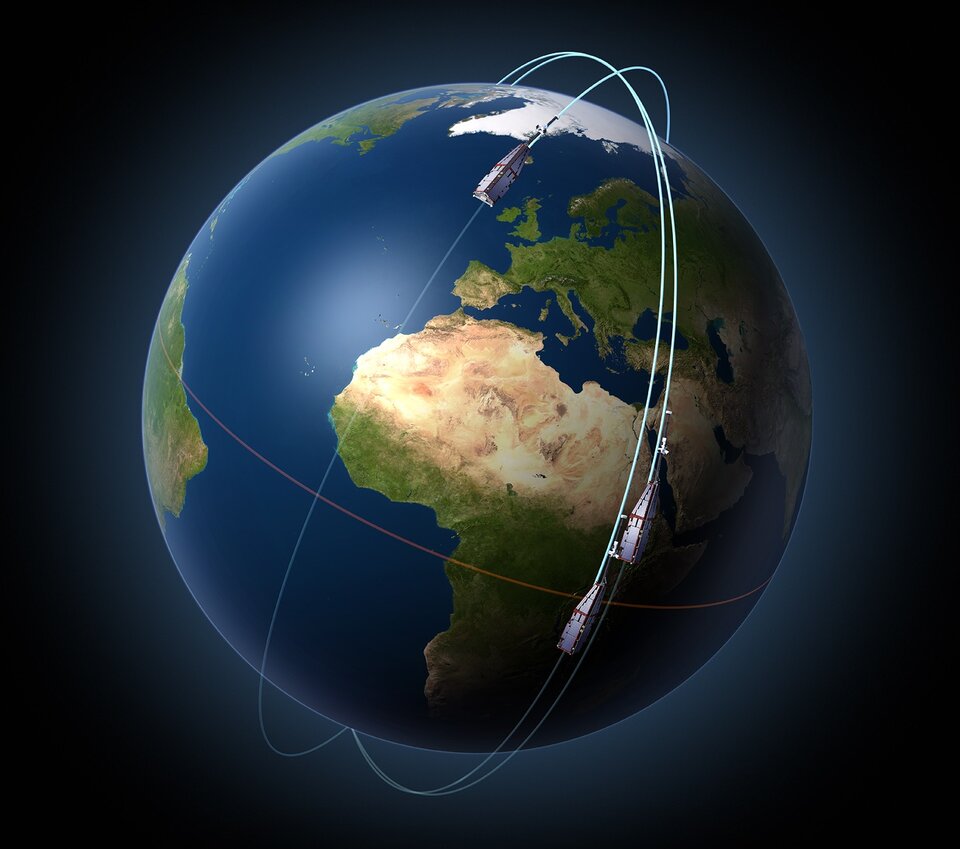
The second challenge in 2012 has to do with the EU budget. Since the Lisbon Treaty entered into force, we have had a triangular public sector in space, with the Member States, the European Space Agency and the European Union at the vertexes. What happens at one vertex necessarily has consequences for the other two. We are carefully monitoring the discussions that are taking place within the EU regarding its multiannual budget for 2014-20, from which major space programmes such as Galileo and GMES are also to be financed.
The third challenge ahead for us this year is the next ESA Council meeting at Ministerial level, scheduled for November. This is again of course a very important milestone, and is a meeting which takes place every three to four years in the life of our Agency (our last Ministerial was held in 2008).
Decisions are to be taken on a broad range of programmes and activities in that high-level setting. Three categories of programmes will be tabled for discussion and decision. The first relates to the progress of knowledge, the science of the universe, knowledge of the Solar System, fundamental physics, Earth sciences, environment, plus all the scientific activities that make use of the space environment and of the ISS in particular.
The second category of programmes encompasses services. This includes the next generation of meteorological satellites in polar orbit which we are currently preparing in close cooperation with Eumetsat. As for GMES, we are currently engaged in preparing the proposal for Sentinel-5, which is closely interlinked with the polar-orbiting second generation of meteorological satellites, since in substance it comprises instruments fitted onboard that design of satellite. In the same area, we will also propose the approval of an altimetry mission (the successor to CNES's Jason-3) with what we are currently calling "Jason CS", as the mission is currently based on the platform that was developed for CryoSat.
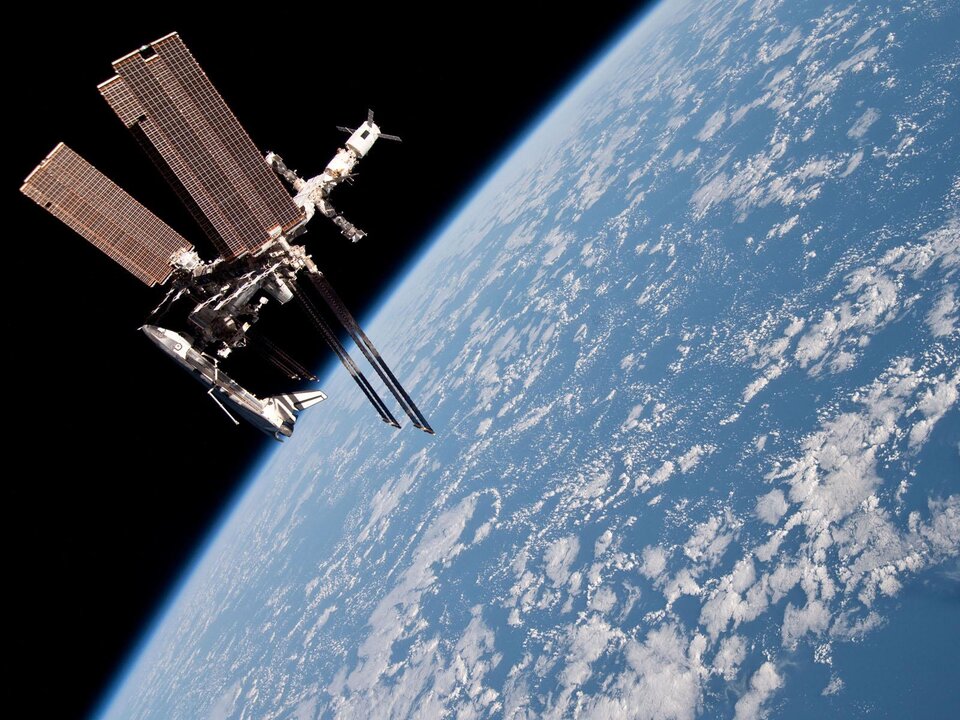
Also under this services category, we will take into account the continued promotion of "integrated applications", which began at ESA's last Ministerial Council and has attracted increasing interest from Member States and private partners associated with such projects.
The third category of programmes and activities requiring ministerial approval relates to European competitiveness and principally encompasses telecommunications. Our current Telecommunications Programme relies on partnerships with all of the major industrial and operational partners with whom we are trying to work closely to enhance the competitiveness of this sector throughout Europe, developing new technologies for ESA and opening up new markets for operators.
Access to space is also a key component of competitiveness. Indeed, it is an important factor in determining the competitiveness of all European players that require access to space to develop their business.
One further aspect that links these three categories together is human spaceflight and space exploration. We are looking into this area with our international partners to develop scenarios for the future. However, as I mentioned at the Conference on Exploration in Lucca last November, exploration is about discoveries, not scenarios. I want, therefore, to see missions materialise in the short term before 2020. We need to find the necessary resources to support such new missions, which is why I am trying to decrease the budgetary burden of ISS Exploitation, in order to prevent the ISS from becoming an obstacle to exploration missions over the short term. Together with our international partners, we are actively involved in decreasing the financial burden of ISS Exploitation in order to free up resources for exploration.
ESA will continue to evolve. We are increasing the development of our partnerships with industry. I would also like to reformulate our contractual relationship with industry, which is the repository for a growing amount of expertise that we must be able to put to best use. For this reason, we need to rethink how we interact with industry, while keeping the balance of interests among ESA Member States.
One last area we will draw to the Ministers' attention in November concerns the changes to the organisation of the Agency itself. It will become lighter in structure. And as we are operating in a difficult economic environment, we also must do our fair share to meet the need for financial accountability and efficiency, which is why I want internal costs to decrease yet further.
The 2012 ESA budget proposed in December 2011 was approved by the Member States. It amounts to approximately €4 billion, a figure roughly equivalent to what we had in 2011. In these difficult economic times, this is the sign that, for our Member States, space is considered a priority. Space is a priority for three main reasons. First of all, because it involves investment in the future. Secondly, because space is an area which serves to strengthen Europe’s role worldwide. Thirdly, because space generates industrial activities which are part and parcel of the very fabric of Europe, activities that are not relocated to outside Europe’s borders – a very important factor in the current economic context.
Thus, a number of challenges lie ahead for us all in 2012. But we are drawing considerable pleasure from working together as a team engaged in these great space endeavours. We are benefiting from our cooperation with an increasing number of value-adding partners. Working handin- hand with our Member States, the EU, our international partners, institutions, industry and operators in several fields is surely the best way forward to enable us to take up the challenges of the future.




